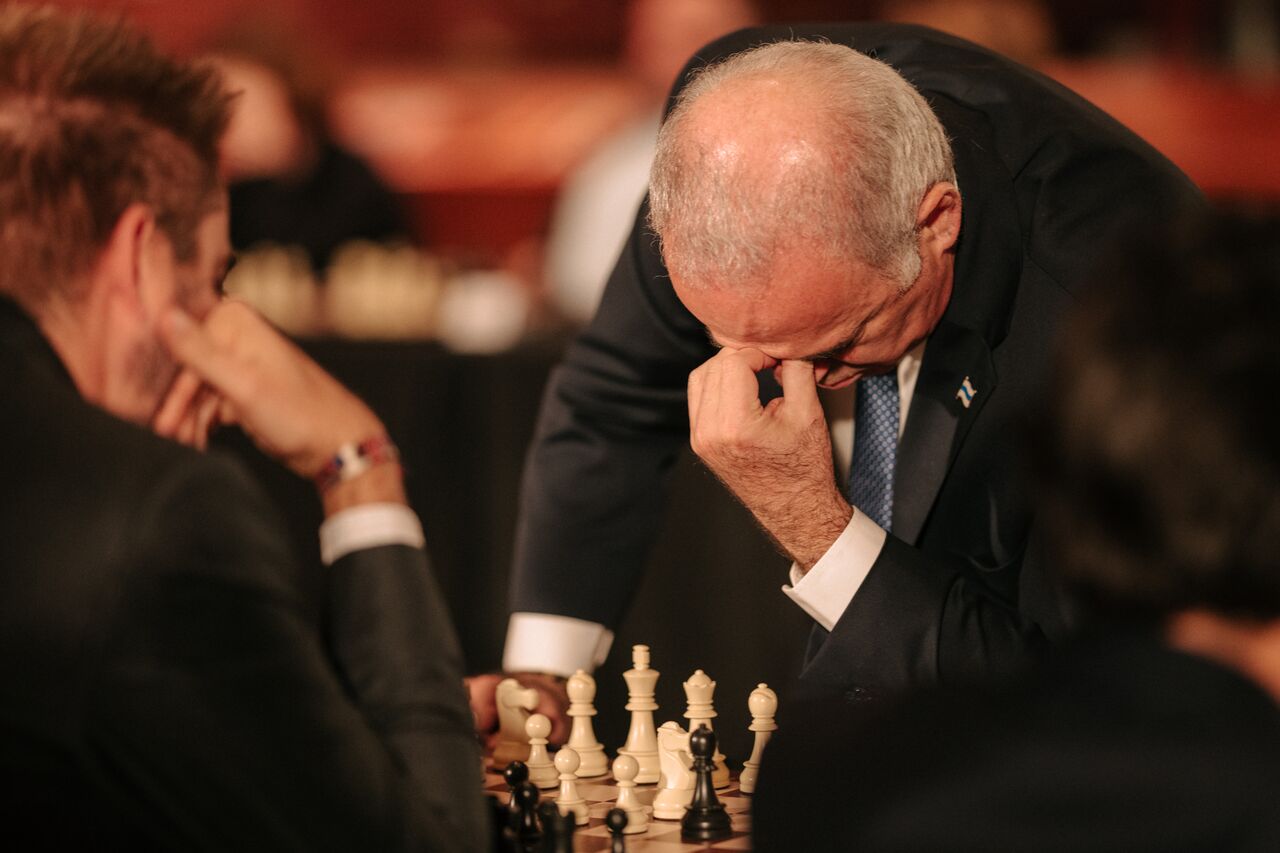Unexpectedly playing Kasparov
I had just published my post about having dinner with Garry Kasparov when I got a call. Belgium's Prime Minister Bart De Wever had dropped out of a simultaneous exhibition where Kasparov would play 20 people at once. Did I want to take his seat?
Of course I didn't hesitate. Within hours, I was sitting across a chessboard from Kasparov. I was never going to win. The question was: in how many moves would I lose?

Kasparov opened with white, and I defended with black using the Caro-Kann defense. I blundered my rook on move 11. A mistake I'm still kicking myself over. But I kept fighting. A few times I made him pause and think for a minute or so. I resigned at move 25. None of the twenty players managed a draw or a win.

The event was livestreamed, with GM Nigel Short and FM Lennert Lenaerts providing commentary. Here is a snippet where they review my position:
This morning, I entered our game into Chess.com's analysis tool. Kasparov played with 94% accuracy, while I managed 80% accuracy (estimated 2100 ELO performance). Not bad for someone who hung a rook early.
I'm grateful I got to play him. It's a game I'll remember for the rest of my life.

Here is the game in PGN notation for anyone who wants to analyze it:
[Event "Simul Exhibition Antwerp"]
[Date "2025.10.21"]
[White "Kasparov, Garry"]
[Black "Buytaert, Dries"]
[Result "1-0"]
[Variant "Standard"]
[ECO "B12"]
[Opening "Caro-Kann Defense: Advance Variation, Tal Variation"]
1. e4 c6 2. d4 d5 3. e5 Bf5 4. h4 h5
5. c4 e6 6. Nc3 Bb4 7. Qb3 Bxc3+ 8. bxc3 Qc7 9. Ba3 Nd7
10. Nf3 Rb8 11. Bd6 Qc8 12. Bxb8 Qxb8 13. cxd5 exd5 14. c4 Ne7
15. Bd3 Bxd3 16. Qxd3 dxc4 17. Qxc4 Nb6 18. Qc2 Qc8 19. Kf1 Qd7
20. Re1 Kd8 21. Ng5 Rf8 22. e6 Qd5 23. exf7 Qc4+ 24. Qxc4 Nxc4
25. Ne6+
And in FEN notation:
3k1r2/pp2nPp1/2p1N3/7p/2nP3P/8/P4PP1/4RK1R b - - 1 25
—